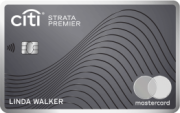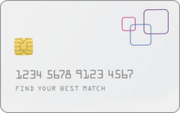The content is accurate at the time of publication and is subject to change.
Every year around this time, we reflect on the year that has passed and contemplate ways to make the upcoming year better than the rest. Holiday shopping may have taken its toll on more than a few bank accounts, but the New Year can mean a new start for your finances. Before 2011 is over, take some time and evaluate your current shopping and spending habits, and analyze ways to make it better in 2012.
Having a debt-free 2012 is not impossible; it just takes dedication and attention to detail. Debt settlement companies may promise that they can get you out of debt in no time, but why pay for a service when we give it to you for free. Here’s how to reduce your debt.
The first step is to find out exactly how much money you owe. Read through your credit card statements, loan totals and overdue bills to calculate how much debt you are actually in. Once you figure out how much you owe, do some math to see how much would you need to pay off each month to eliminate the debt in a year. Calculate living expenses such as food, water, gas, etc., and use the rest to systematically pay off your debt. When calculating debt, make sure to pay attention to the interest acquired on each loan and credit card. It makes the most sense to pay off the credit card or loan with the highest interest rate before the lower interest rate credit card or loan. By doing this, it may eliminate debt faster.
Balance transfer credit cards may be a good option as they allow you to combine the balances of many credit cards onto one low or no interest introductory offer credit card. Depending on which credit card, you may be able to use your low or zero-interest credit card for up to 24 months in some cases. Beware, because once the introductory offer is up interest rates are subject to go up percentages higher than the average APR. And in some cases close to 30% interest. Balance transfers are a smart option if you are committed to paying off your debt in time. Also, beware of balance transfer fees, late and penalty fees when signing up for these types of accounts.
Next, make a payment plan that you can commit to. In order to start this process, try calling up your credit card company and expressing to them your situation. If the company sees that you are making an attempt to pay your balance on time, they may be more likely to accept a request for a lower minimum payment or interest rate. It’s best to close one card at a time. So first, commit to paying off the highest interest rate credit card and pay off until closed. And then move onto the next highest interest rate credit card, and then continue that pattern until all cards are closed.






